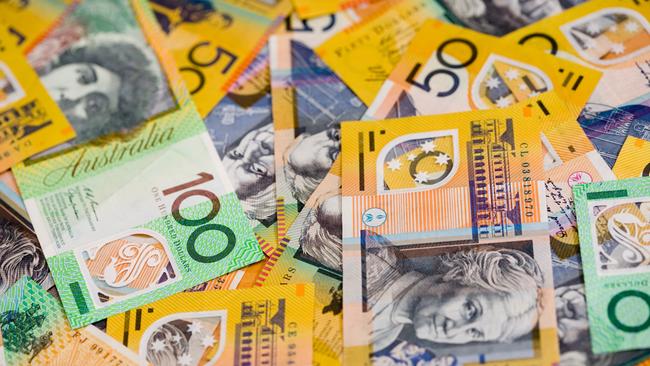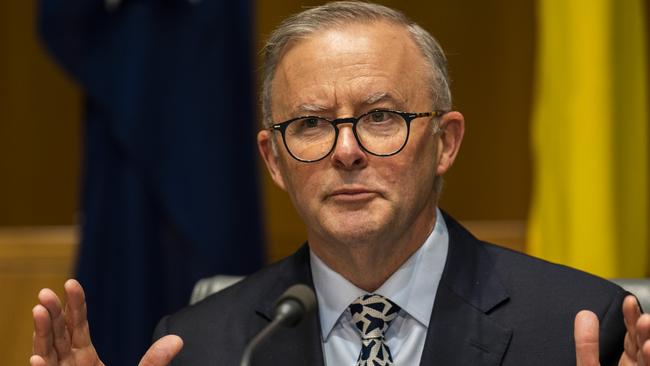Millions of Aussies set for huge tax cuts, with high earners benefiting most
There are huge tax cuts coming and one group of Australians will be biggest winners. Here’s everything you need to know.
News
Don't miss out on the headlines from News. Followed categories will be added to My News.
Despite a crushing rise in the cost of living, it is well-off Australians who will get the biggest tax break as Anthony Albanese promised to push ahead with tax cuts that disproportionately benefit high-earners.
The Prime Minister warned of pain to come as he admitted the government will have to place a strict cap on spending when it hands down its first budget while fulfilling commitments Labor made at the election.
However, by far the biggest single piece of spending, the Stage Three tax cuts which will cost an eye-watering $15 billion a year and benefit high-earning Australians, will be honoured.
Mr Albanese said Labor will push ahead with the implementation of already-legislated income tax cuts in 2024 which will create a flat rate of 30 per cent for those making between $45,000 and $200,000.
Australians earning more than $120,000 who are now taxed at 37 per cent are set to benefit the most, with workers making $90,000 a year saving $1,125 and those on $200,000 more than $9000 better off.
Stream more finance news live & on demand with Flash. 25+ news channels in 1 place. New to Flash? Try 1 month free. Offer ends 31 October, 2022 >

Speaking on 7.30 on the ABC on Thursday, Mr Albanese confirmed there will be another federal budget handed down on October 25, 2022, just months after Scott Morrison’s government delivered a budget in March.
Mr Albanese also warned of some tough decisions in the October budget.
“We’re going to have to really put the brakes on some of the spending which is there,” he said. “There are a range of things we would like to do that we won’t be able to do in our first budget.
“We will also be going through line by line, looking at the waste which is there, and already, we’ve identified a range of measures that were made by the former government that frankly don’t stack up.”
He said election commitments like cheaper childcare, setting up Jobs and Skills Australia and climate change would be honoured, as would the tax cuts for high-earners.
Professor Ben Phillips, an expert in welfare and cost of living at the Australian National University, said the cost of the tax cuts dwarfs the cost of Labor’s key promises and benefits a group of Australians who are already doing well for themselves.
“These cuts blow everything else out of the water in terms of costs, so that’s where the biggest problem is going to come from in terms of balancing the books,” he said. “They could instead give more assistance to low income areas like JobSeeker recipients – that’s where relief should be targeted because middle and higher income earners are doing OK.”

Unemployed Australians receiving Centrelink payments will get no extra money after Labor ditched its plans to review the rate of JobSeeker. A single person currently earns $642.70 a fortnight or $46 a day.
However, Mr Albanese defended the tax cuts for the rich, saying they had already been legislated.
“They are legislated, and one of the things that people have a right to believe is that when a politician makes a commitment before an election, they keep it, and I intend to do that,” Mr Albanese said.
“What we need as well is to have certainty. People have made assessments based upon the certainty that comes through legislated tax changes, and we intend to fulfil that.”
Millions benefit from minimum wage increase
Millions of low-earning Australians will however benefit from a rise to the minimum wage.
Some 2.7 million minimum wage and low-paid workers on awards are receiving a wage increase of up to 5.2 per cent – the most generous in 16 years.
From July 1, this will see the lowest paid receive $812.60 a week, an increase of $40, and $21.38 an hour, up $1.05.
Labor will also honour the abolition of the Low and Middle Income Tax Offset.
Income earners on up to $126,000 have received the lower and middle income tax offset worth up to $1080 a year each financial year since 2018-19.
The offset was due to end when stage two tax cuts came into play but was extended for two more years after the cuts were brought forward to 2020 due to the pandemic.
The end of the rebate means that Aussies earning up to $126,000 will pay up to $1500 more income tax in 2023 than this year.
Originally published as Millions of Aussies set for huge tax cuts, with high earners benefiting most





